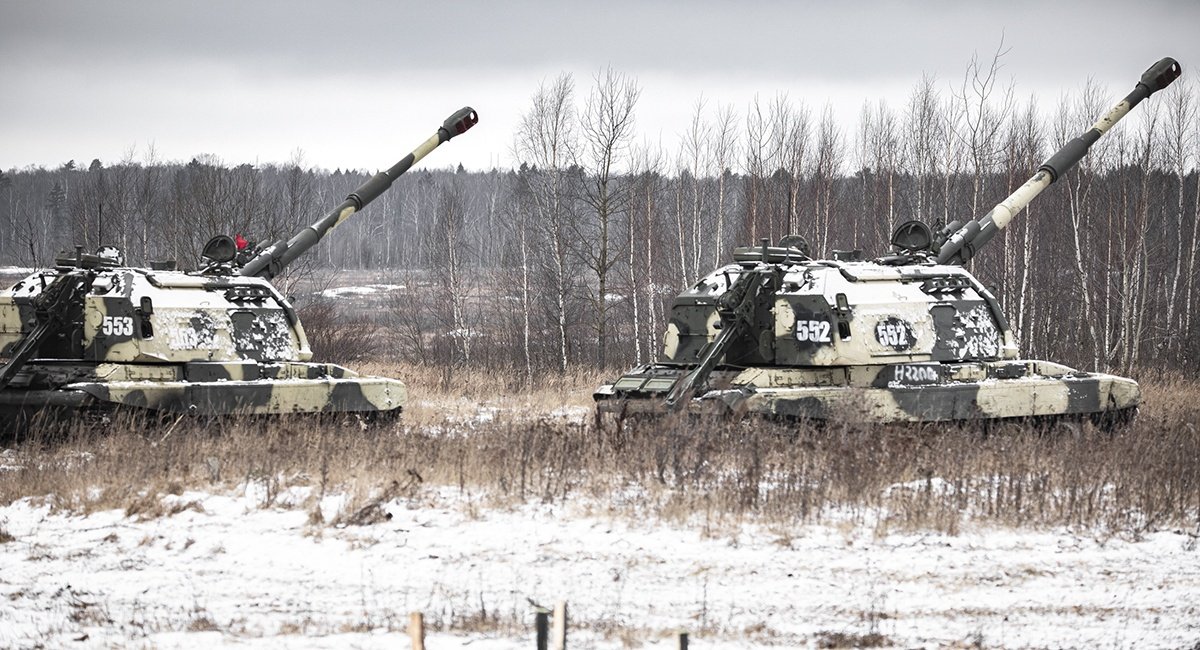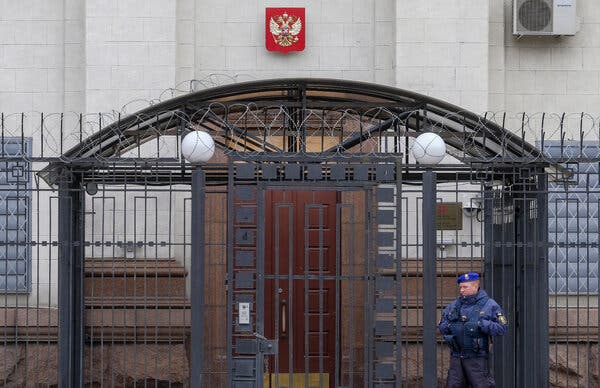All from same source link
Part 2:
In my opinion, the attack on the occupied Crimea will only aim to distract nature in order to stretch the defense. And the naval landings, which are now being actively talked about in sub-zero temperatures, will only lead to personnel losses. , an attack on the gathering of Russian units attacking from the east in the final phase - is possible.

Winter significantly reduces the capabilities of marines
Most likely, the enemy will use those tools and forces that are still beyond the control of intelligence. There is also a notable accumulation of manpower, there is a transfer of personnel from the Far East of the Russian Federation, from the northern regions. It is necessary to monitor units that have recently been trained, deployed and trained in combat.
It should be understood that equipment for these units has been accumulating near our borders for a year now. During this period, the Russian Federation has repeatedly supplied and withdrawn units, but how much equipment remains near Ukraine is a separate issue. In other words, the equipment could have been preserved and is just waiting for the personnel to arrive,” said Vadym Pavlych.
Horde tactics
For Russia, the experience of offensive action has not changed since the 13th century, since the Tatar-Mongol invasion - to take numbers. But it is important to understand - a man on defense just gets tired of "swinging a sword", and when the enemy has a significant numerical advantage of one unit and immediately replaces it with another, bypass the resistance node, that is, do not think that the enemy will resist and defend itself to the end.
They are usually protected from invasion by modern tanks by other methods. The most effective way is to prevent refueling - to eliminate the maneuver component. In order for the tank unit to go on the offensive, it provides a lot of additional equipment with "refills".

Mass refueling of Russian tanks from the ground
In my opinion, the enemy will make jumps of up to 120 km at most, where they will capture bases and deploy support bases on them. Most likely, they will be large railway stations, because the Russian army has worked out the interaction of the railway troops, who are supposed to provide logistics. From these units, automotive equipment will already be transporting fuel and ammunition for a distance of 30 to 40 km, where advanced supply bases will be located.
Attention should also be paid to the management of Russian army tank units, which use automated control systems. Especially for the mass use of "Orlan-10" UAVs. And this is actually another "tracking role" from our experience, because until 2016, Russia had large drones like the "Outpost". But UAV control points and all command and staff vehicles can be easily captured by radio reconnaissance and their exact coordinates.

UAV "Orlan-10" and control point on the chassis "KamAZ"
That is, it will be necessary to hit long-range missile weapons on logistics and command units - "Alder", "Tornado", "Point-U".
It is also necessary to use the full potential of who we are in our own land. These are the actions of special operations forces who have to "hunt down" the rear columns. Use remote mining to force the enemy to go in the direction we need - into the narrow gorge. Use ambushes, a network of erroneous and defensive positions, that is, our commanders must have a series of tactics.
It is a mistake to think that it is enough to create platoon bases. No tanker will dare to go to the GP on the forehead. This requires a great concentration of forces and will still lead to significant losses. Because every GOP has minefields, anti-tank missiles, and an anti-tank reserve. That is, the Russian army will try to go where it is sure there is no resistance. And our commanders must understand exactly where the enemy will try to ignore them.
If that happens, a lot will depend on the counter-fight, which is the most unacceptable for both sides, as the losses are distributed 1:1. But there's time to cement the defense," said Vadym Pavlych.
Not just tanks
But in addition to tanks, which are the main means of advancement in the Russian army, special attention should be paid to the BMP-3. The Kremlin made a separate bet on this car, not only launching its mass production, but also modernizing it, installing a unified "Bakhcha" turret.
This made it possible to significantly expand the combat capabilities of the BMP-3, which is armed with 100 mm and 30 mm cannons thanks to a thermal imager, a panoramic view of the commander and a new fire control system.

BMP-3 of the Russian army
To be blunt, the BMP-3 is already a floating light tank. If the tanks, in accordance with the old Soviet tradition, get away from the infantry or get stuck, the BMP-3 is capable of carrying out a wide range of tasks in addition, the BMP-3 is the only Soviet car that had a level of quite high comfort, which allowed the driver's mechanics to make long marches.
BMD-4 of the Russian army
This is the most threatening time the enemy is constantly working on training. That is, the Kremlin hopes to destroy our air defenses and then capture important units in the rear with the help of airborne units.
If Russia has returned to the experience of the USSR, albeit modernized through new technologies, controls, intelligence and fire contact, it is necessary to look closely at the NATO experience during the Cold War. More precisely, Alliance funds in Western Europe, which were supposed to neutralize the Soviet army during its "jump into the English Channel". And the West has just had a pervasive saturation of anti-tank weapons.
That is, we have to create a powerful system of protection against the armored threat of the Russian army through foreign aid, our own anti-aircraft missiles, kamikaze drones and UAV strikes. We need to move away from the illusion that we have already done all we can in this area. Seek new approaches in the organizational and personnel structure of our teams and units. And the main thing is not to waste time and focus on what we believe we have already conquered and learned”, underlined Vadym Pavlych.
It should be noted that a number of weapons were developed to combat the invasion of Soviet tanks. From TOW anti-aircraft missiles and later Javeline, to Hellfire guided missiles, AH-64 Apache attack helicopter, A-10 attack aircraft, individually guided sub-elements for tactical missiles and much more. Even tanks in Allied countries were once seen primarily as anti-tank weapons. And the same Abrams received a high-explosive projectile only in the 2000s.
Part 2:
In my opinion, the attack on the occupied Crimea will only aim to distract nature in order to stretch the defense. And the naval landings, which are now being actively talked about in sub-zero temperatures, will only lead to personnel losses. , an attack on the gathering of Russian units attacking from the east in the final phase - is possible.
Winter significantly reduces the capabilities of marines
Most likely, the enemy will use those tools and forces that are still beyond the control of intelligence. There is also a notable accumulation of manpower, there is a transfer of personnel from the Far East of the Russian Federation, from the northern regions. It is necessary to monitor units that have recently been trained, deployed and trained in combat.
It should be understood that equipment for these units has been accumulating near our borders for a year now. During this period, the Russian Federation has repeatedly supplied and withdrawn units, but how much equipment remains near Ukraine is a separate issue. In other words, the equipment could have been preserved and is just waiting for the personnel to arrive,” said Vadym Pavlych.
Horde tactics
For Russia, the experience of offensive action has not changed since the 13th century, since the Tatar-Mongol invasion - to take numbers. But it is important to understand - a man on defense just gets tired of "swinging a sword", and when the enemy has a significant numerical advantage of one unit and immediately replaces it with another, bypass the resistance node, that is, do not think that the enemy will resist and defend itself to the end.
They are usually protected from invasion by modern tanks by other methods. The most effective way is to prevent refueling - to eliminate the maneuver component. In order for the tank unit to go on the offensive, it provides a lot of additional equipment with "refills".
Mass refueling of Russian tanks from the ground
In my opinion, the enemy will make jumps of up to 120 km at most, where they will capture bases and deploy support bases on them. Most likely, they will be large railway stations, because the Russian army has worked out the interaction of the railway troops, who are supposed to provide logistics. From these units, automotive equipment will already be transporting fuel and ammunition for a distance of 30 to 40 km, where advanced supply bases will be located.
Attention should also be paid to the management of Russian army tank units, which use automated control systems. Especially for the mass use of "Orlan-10" UAVs. And this is actually another "tracking role" from our experience, because until 2016, Russia had large drones like the "Outpost". But UAV control points and all command and staff vehicles can be easily captured by radio reconnaissance and their exact coordinates.
UAV "Orlan-10" and control point on the chassis "KamAZ"
That is, it will be necessary to hit long-range missile weapons on logistics and command units - "Alder", "Tornado", "Point-U".
It is also necessary to use the full potential of who we are in our own land. These are the actions of special operations forces who have to "hunt down" the rear columns. Use remote mining to force the enemy to go in the direction we need - into the narrow gorge. Use ambushes, a network of erroneous and defensive positions, that is, our commanders must have a series of tactics.
It is a mistake to think that it is enough to create platoon bases. No tanker will dare to go to the GP on the forehead. This requires a great concentration of forces and will still lead to significant losses. Because every GOP has minefields, anti-tank missiles, and an anti-tank reserve. That is, the Russian army will try to go where it is sure there is no resistance. And our commanders must understand exactly where the enemy will try to ignore them.
If that happens, a lot will depend on the counter-fight, which is the most unacceptable for both sides, as the losses are distributed 1:1. But there's time to cement the defense," said Vadym Pavlych.
Not just tanks
But in addition to tanks, which are the main means of advancement in the Russian army, special attention should be paid to the BMP-3. The Kremlin made a separate bet on this car, not only launching its mass production, but also modernizing it, installing a unified "Bakhcha" turret.
This made it possible to significantly expand the combat capabilities of the BMP-3, which is armed with 100 mm and 30 mm cannons thanks to a thermal imager, a panoramic view of the commander and a new fire control system.
BMP-3 of the Russian army
To be blunt, the BMP-3 is already a floating light tank. If the tanks, in accordance with the old Soviet tradition, get away from the infantry or get stuck, the BMP-3 is capable of carrying out a wide range of tasks in addition, the BMP-3 is the only Soviet car that had a level of quite high comfort, which allowed the driver's mechanics to make long marches.
BMD-4 of the Russian army
This is the most threatening time the enemy is constantly working on training. That is, the Kremlin hopes to destroy our air defenses and then capture important units in the rear with the help of airborne units.
If Russia has returned to the experience of the USSR, albeit modernized through new technologies, controls, intelligence and fire contact, it is necessary to look closely at the NATO experience during the Cold War. More precisely, Alliance funds in Western Europe, which were supposed to neutralize the Soviet army during its "jump into the English Channel". And the West has just had a pervasive saturation of anti-tank weapons.
That is, we have to create a powerful system of protection against the armored threat of the Russian army through foreign aid, our own anti-aircraft missiles, kamikaze drones and UAV strikes. We need to move away from the illusion that we have already done all we can in this area. Seek new approaches in the organizational and personnel structure of our teams and units. And the main thing is not to waste time and focus on what we believe we have already conquered and learned”, underlined Vadym Pavlych.
It should be noted that a number of weapons were developed to combat the invasion of Soviet tanks. From TOW anti-aircraft missiles and later Javeline, to Hellfire guided missiles, AH-64 Apache attack helicopter, A-10 attack aircraft, individually guided sub-elements for tactical missiles and much more. Even tanks in Allied countries were once seen primarily as anti-tank weapons. And the same Abrams received a high-explosive projectile only in the 2000s.















